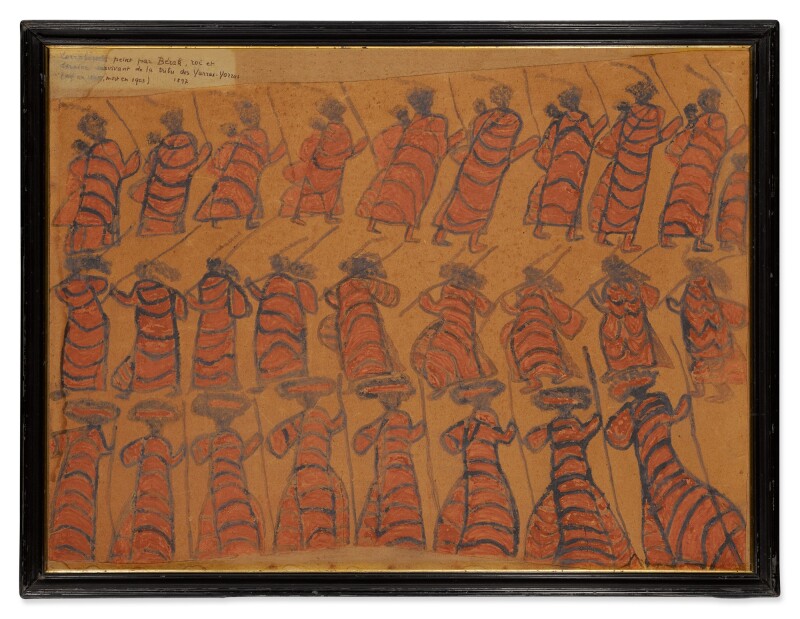
Two Aboriginal artworks are heading back to Australia after a last-minute effort by the country’s state government to purchase the pieces at auction in New York.
The two objects, a painting and a parrying shield, were each created in 1897 by Wurundjeri artist William Barak, widely considered to be among the most important aboriginal artists of the 19th century. They were consigned by members of Switzerland’s De Pury family (which includes auctioneer Simon De Pury) for Sotheby’s Aboriginal Art auction, which took place last night, May 25.
The painting, Corroboree (Women in possum skin cloaks), was made with Earth pigments and charcoal on paper, and depicts several rows of women performing in a ritualistic ceremony. Estimated at $300,000–$400,000, it sold for $378,000. The engraved shield, meanwhile, went for $52,920—well past its pre-sale estimate of $15,000-$25,000.
Both artworks by Barak were won by an in-room bidder from the Wurundjeri Corporation, a Melbourne-based non-profit tasked with protecting the cultural heritage of the Wurundjeri peoples.
William Barak, Parrying Shield (1897). Courtesy of Sotheby’s.
“I feel pumped, I tell you,” Ron Jones, a Wurundjeri elder and descendent of William Barak, who watched the auction, told ABC. “We brought an ancestor’s relic back to Australia where it belongs, and Uncle William Barak, what a tremendous man he was.”
In April, after news of the Sotheby’s sale went public, the Wurundjeri Corporation launched a crowdfunding campaign with the goal of raising enough money to purchase of the pair of Barak artworks. By this week, the group collected $117,627 in donations—a significant amount, but likely not enough to win the objects at auction.
In stepped the leaders of the Victoria State Government, who contributed $500,000 at the last minute, despite initially declining to support the effort. The change of heart came late Wednesday night Australian time, when members of the corporation met with the state government.
“They’re now owned by the Victorian community and that’s a fantastic outcome,” the state’s premier, Daniel Andrews, told local reporters after the auction, according to the Guardian. “We didn’t want them going into a private collection on the other side of the world. This is a really important part of our history. It’s a really important part of healing and our journey forward.”
Andrews said that the final destination for the aboriginal artworks has not yet been settled, but mention the National Gallery of Victoria and Melbourne Museum as potential homes. The government is now working with the Corporation to transport the artworks back to Australia.